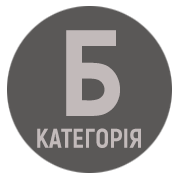Phraseological units with color names by types of idiomaticity
DOI:
https://doi.org/10.32782/2617-3921.2021.20.56-66Keywords:
phraseological unit, color names, types of idiomaticity, phraseological units-comparison, phraseological units-metonymy, phraseological units-metaphorsAbstract
In this article, we suggest to consider the phraseological units of modern English, which contain color names, in order to determine the function and role of color names in the formation of connotative meanings of English phraseology. Despite the fact that the vocabulary to denote colors, and their shades is a constant object of experimentation in various linguistic theories, the peculiarities of its use in the phraseological units of the English language are incompletely studied. At the same time, the study of color symbols through the prism of phraseology helps to obtain thorough information about the holistic picture of the world, stereotypes, and values that characterize a particular ethnic group, which in turn helps to clarify linguistic phenomena, their etymology, and semantics. The object of this study are the types of phraseological idiomaticity with an element to denote colors in modern English. The subject of the research is phraseological units with a component for color designation (11 basic color names) in modern English. Since the de-actualization of a word in a phraseological unit is directly related to the idiomaticity of the expression itself, phraseology, which includes the name of the color, should be classified by types of idiomaticity, namely: phraseologycomparison, phraseology-metaphor, and phraseology-metoneology. In the course of the research we established that the composition of metonymic, periphrastic and euphemistic phraseology includes color names with their primary (color designation) semantics. As a rule, color names carry an attributive content. They not only affect the overall value of idioms, but also perform a semantic function. Also on the material of the research it is established that depending on the type of reinterpretation tokens for color designation have a different degree of deactivation. Thus, in phraseological comparisons, color designations necessarily denote color, in metonymies this component also has a color feature, but in metaphors, where the highest level of reinterpretation, the degree of deactivation of the word is the highest one.
References
Англо-український фразеологічний словник / за ред. К.Т. Баранцева. Київ : Радянська школа, 1069. 1052 с.
Баранов А.Н. Аспекты теории фразеологии. Москва : Знак, 2008. 656 с.
Большой англо-русский фразеологический словарь : около 20,000 фразеологических единиц / под ред. А.В. Кунина. Москва : Живой язык, 1998. 944 с.
Добровольский Д.О. Факторы сочетаемости: семантика, прагматика, узус. Русский язык в научном освещении. 2002. № 2. С. 43–86.
Жуков В.П. Русская фразеология. Москва : Высшая школа, 1986. 312 с.
Кунин А.В. Курс фразеологии русского языка. Дубна : Феникс+, 2005. 488 с.
Кушнерик В.І., Філіпчук Ю.С. Особливості сприйняття фразеологізмів з колоронімами. Наука та освіта 2005 : матеріали VIII міжнар. конф., м. Дніпропетровськ, 21-22 травня 2005р. Дніпропетровськ, 2005. Том 3. С. 28–31.
Маслова В.А. Лингвокультурология. Москва : Академия, 2001. 208 с.
Мацько Л.І., Сидоренко О.М., Мацько О.М. Стилістика української мови : підручник для філологічних спеціальностей вищих навчальних закладів. Київ : Вища школа, 2003. 431–453.
Мокієнко В.М. Славянская фразеология. Москва, 1989. 216 с.
Longman American Idioms Dictionary. London : Longman Publishing, 1999. 402 p.
Longman Dictionary of English Idioms. London : Longman Publishing, 1996. 388 p.
The Oxford Dictionary of English Proverbs / Ed. W.G. Smith. Oxford : Oxford University Press, 1963. 740 p.



